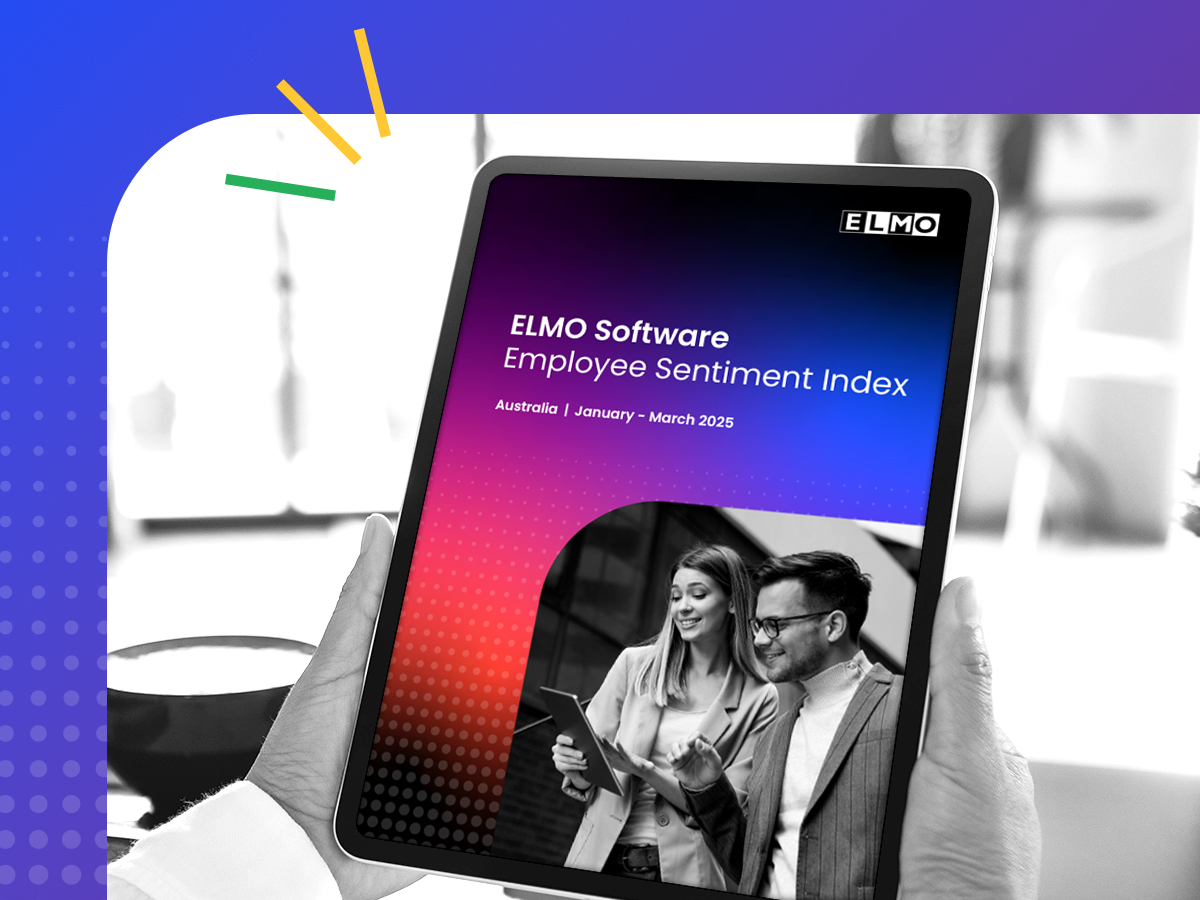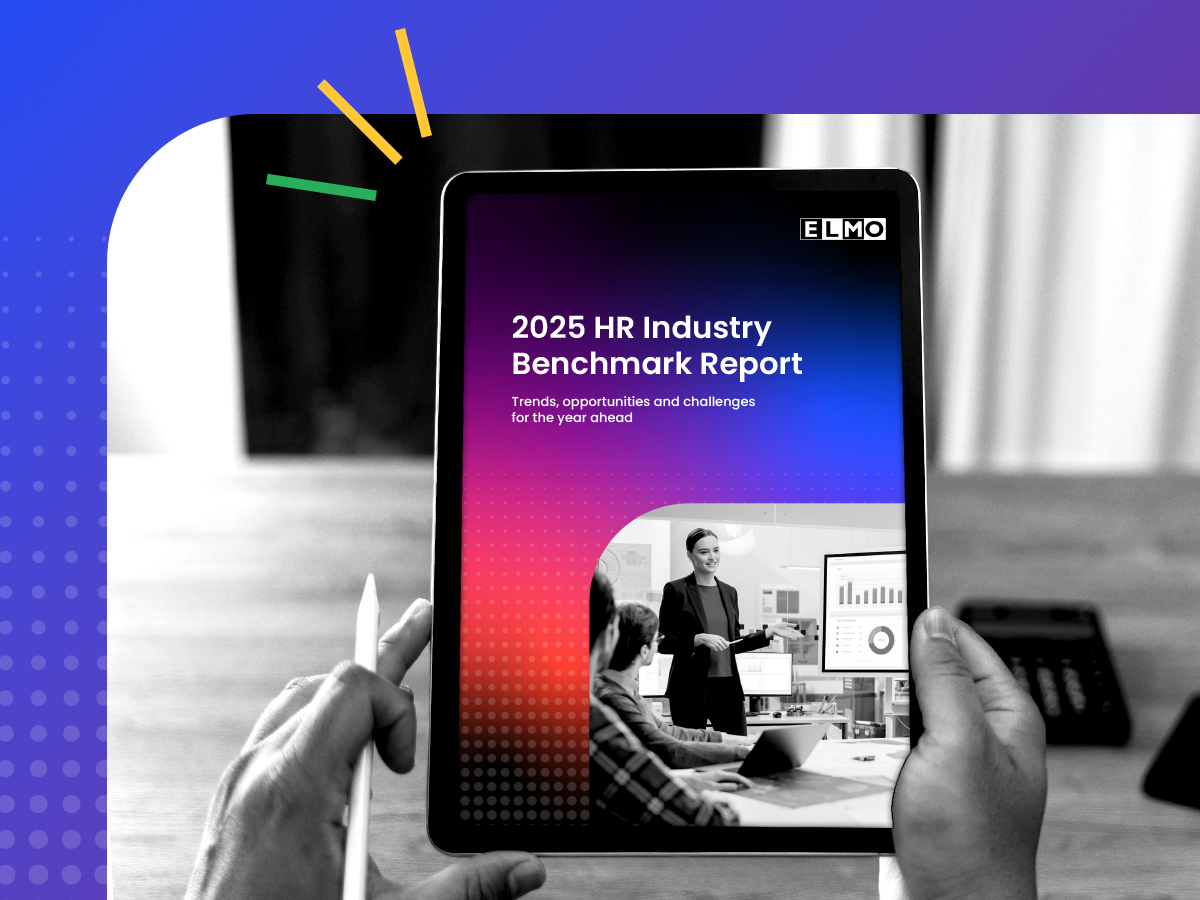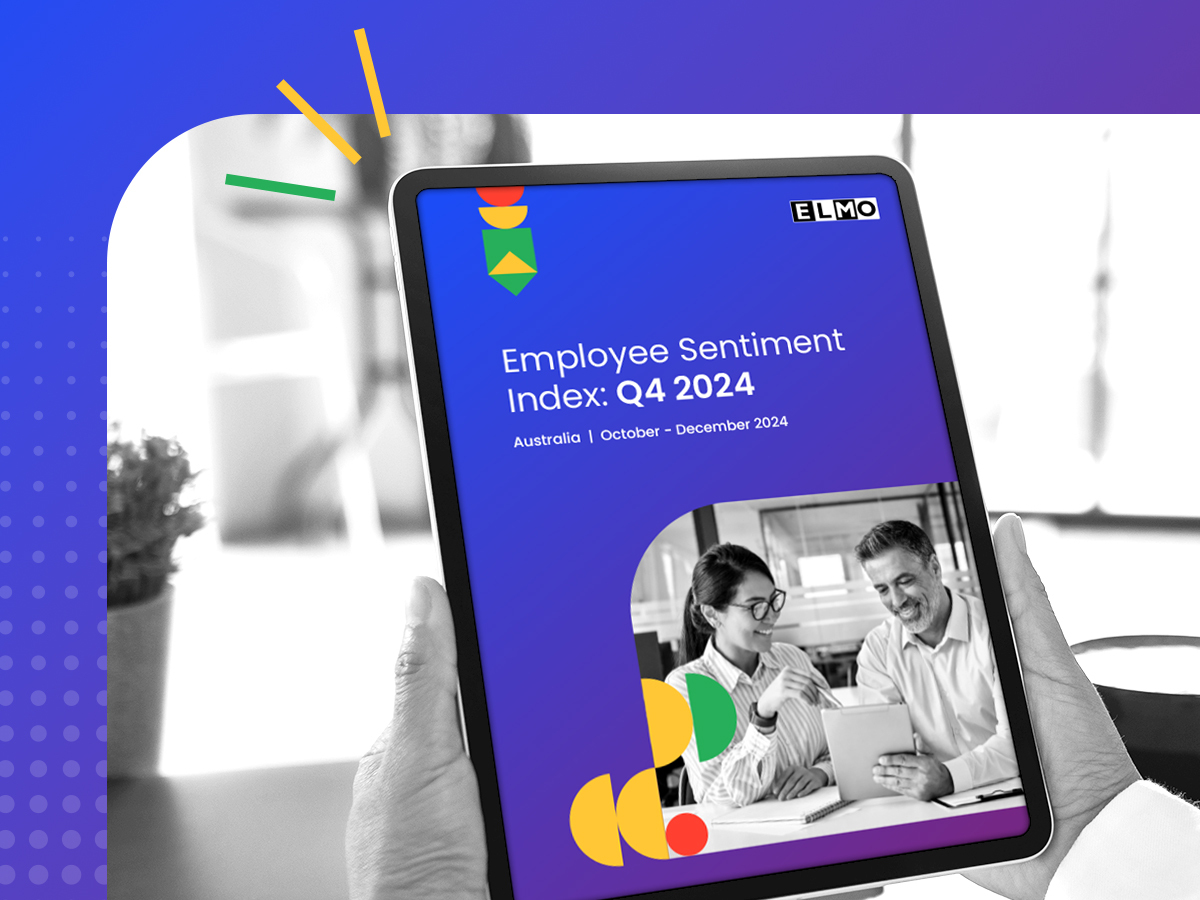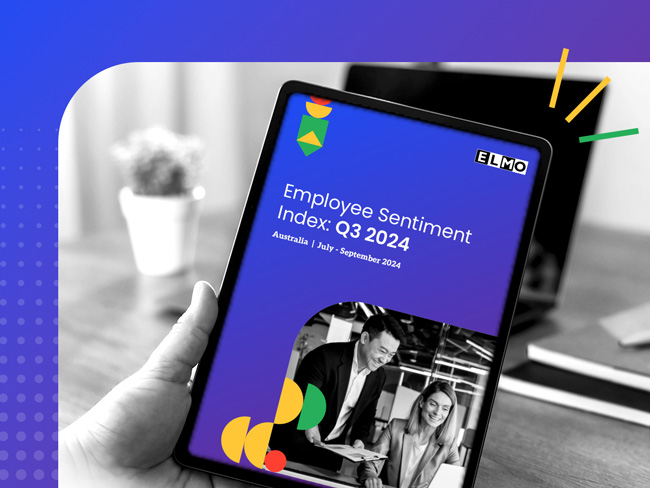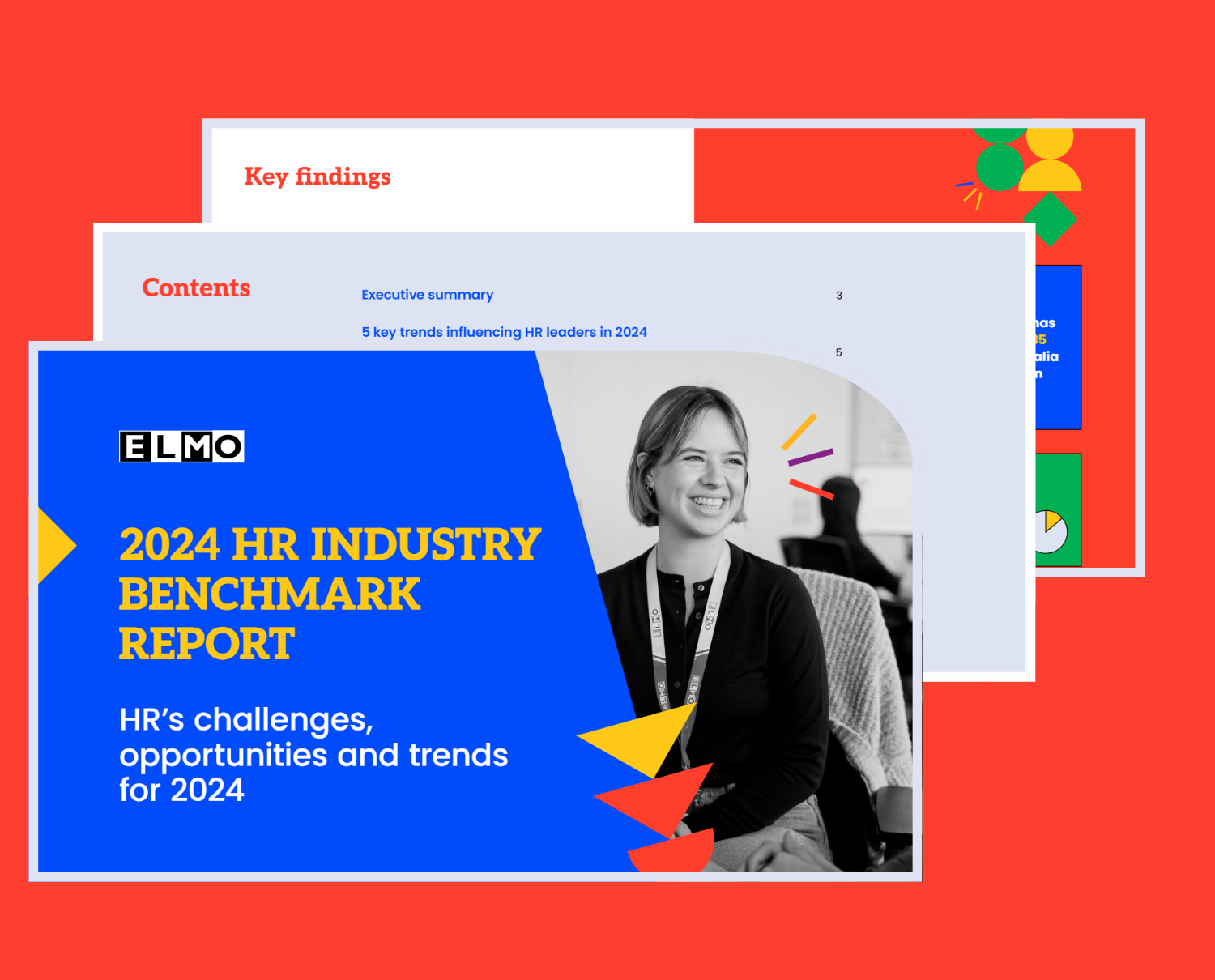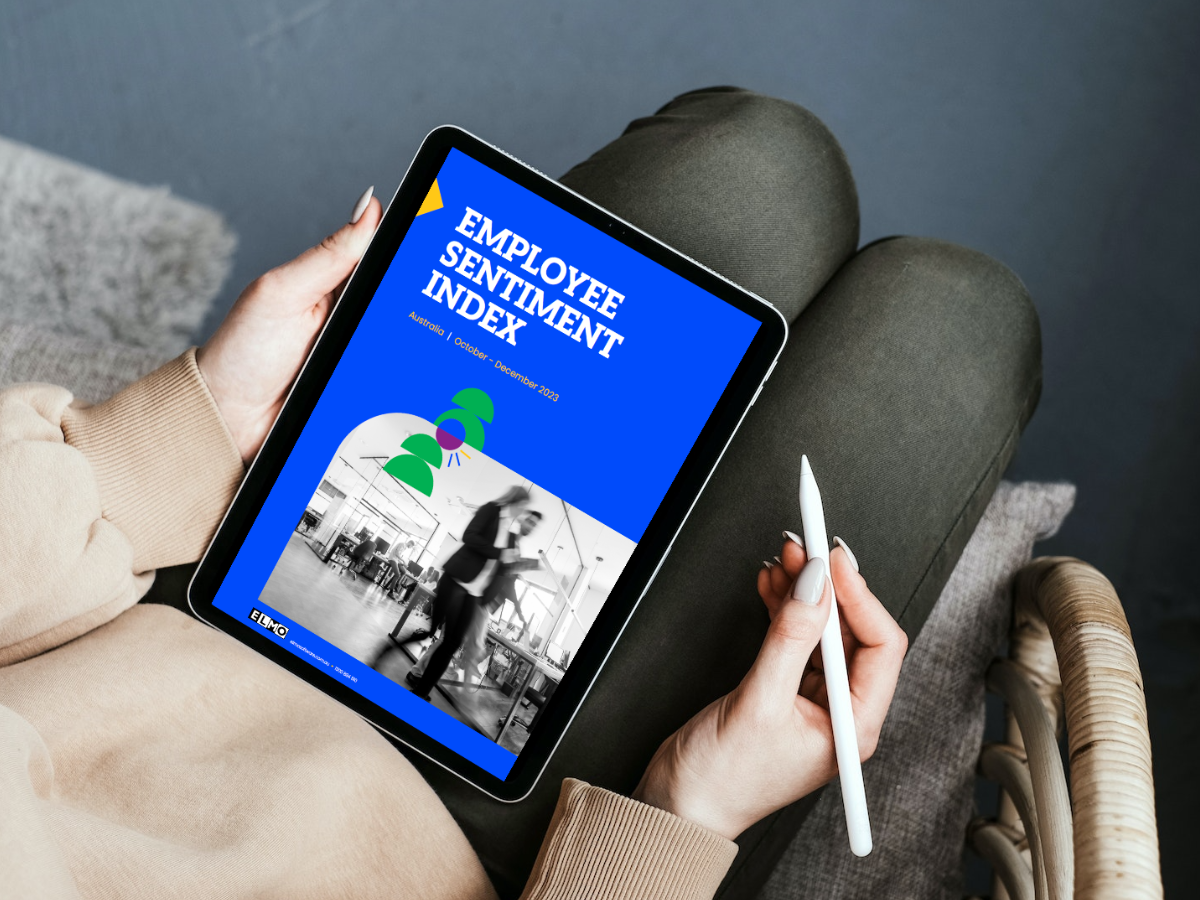ELMO Employee Sentiment Index Australia (July – September ‘25)
This quarter’s report uncovers how a cautious workforce is managing increased responsibility, persistent burnout, and uneven readiness for the future of work. Download the report for real insights into what’s driving employee sentiment across Australia, and what it means for workforce planning in 2026.
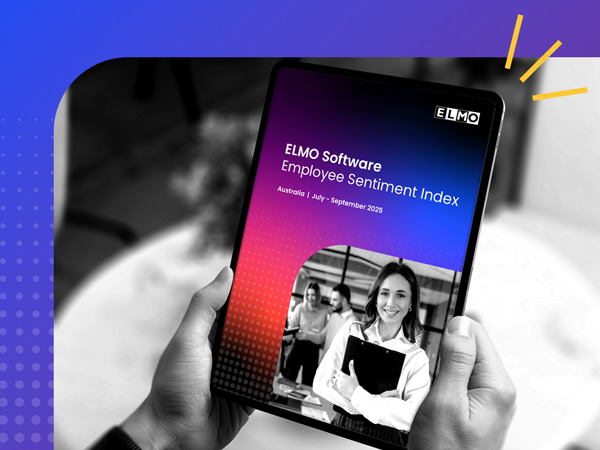
Is job security coming at the cost of capability?
Aussie employees are ‘job hugging’, holding tight to job security even as burnout, skill gaps, and AI unreadiness rise. Our latest Employee Sentiment Index reveals that while confidence is stabilising, capability isn’t keeping pace.
This quarter’s report uncovers how a cautious workforce is managing increased responsibility, persistent burnout, and uneven readiness for the future of work. Download the report for real insights into what’s driving employee sentiment across Australia, and what it means for workforce planning in 2026.
Top Insights
Employees are staying put, but many are struggling to keep pace with new demands and technologies. The result? A workforce that values stability but risks slipping behind.
Capability without confidence
Confidence in economic and job security is improving, but readiness for change is lagging. While four in five employees say they’ve received training in the past year, many still don’t feel equipped for the impact of AI or the pace of industry change.
The data reveals a growing divide between awareness and action: employees see AI as relevant but feel unsupported in building the skills they need to adapt. Burnout remains high, suggesting that workers are pushing harder without the development support to match.
 HR Core
HR Core 

